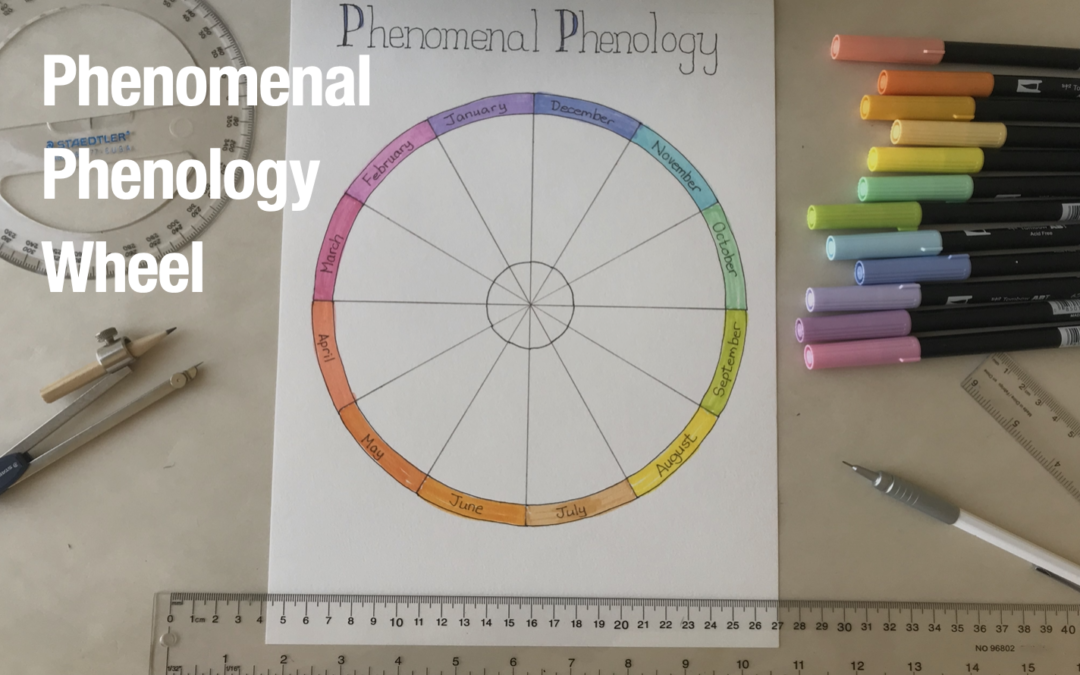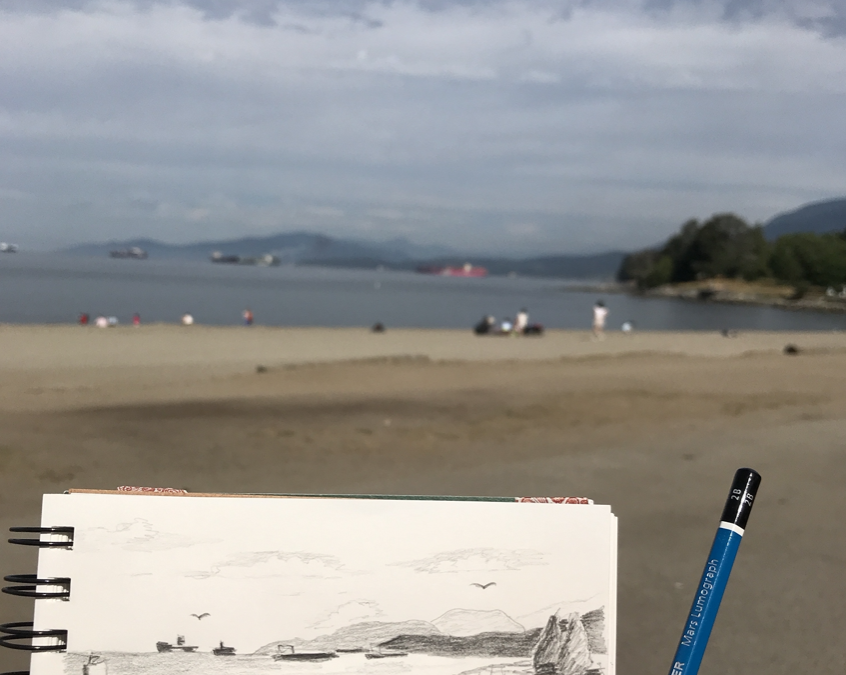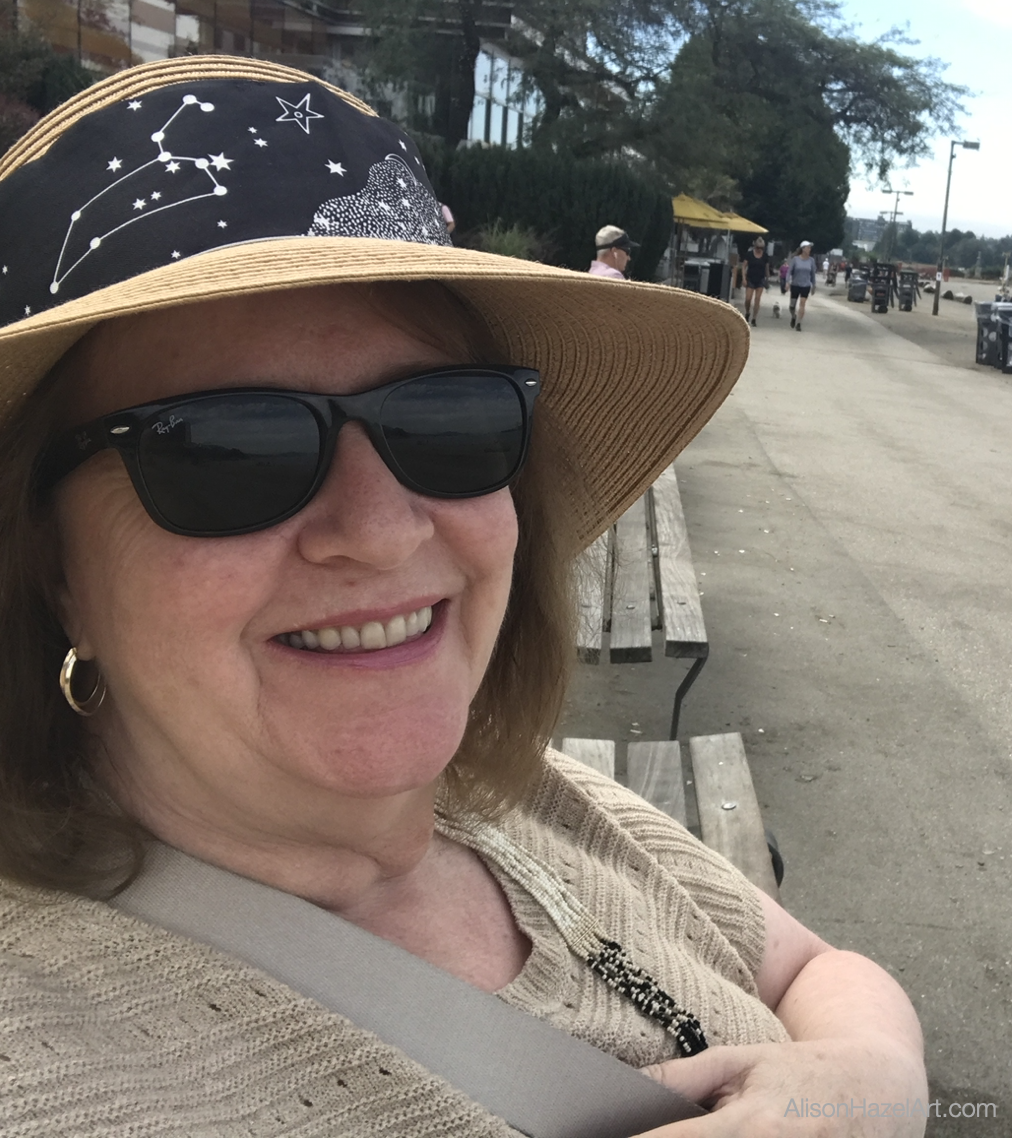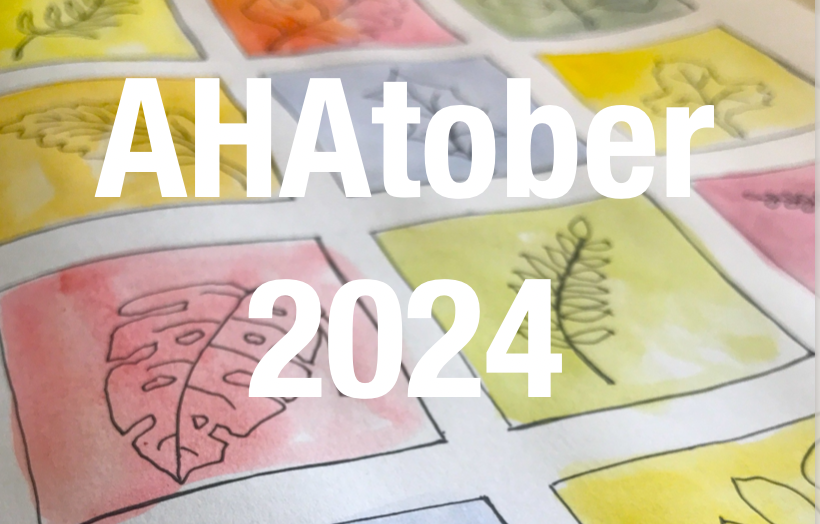Read the interview with artist Sandra Sabota who won Inktober/AHAtober for the first time this year. Inspiration for Aspiring Artists.

Seasons of Art: Spring
Seasons of Art: Spring 2023
Group Meeting
Learn more about the recent Seasons of Art group meeting.
See more about the Seasons of Art group here.
Satvvir’s Artwork
Below is Satvvir’s artwork (Instagram @theambivertsbb). She used watercolor and combined orabges and yellows with a lot of texture in this piece.

Arwynne’s Artwork
Here is Arwynne’s finished artwork. You can see more of her work at IG @mspinkdotcom.

Gillian’s Artwork
Below is Gillian’s finished artwork. I first meyt Gillian when she led a watercolor class at the Elephant Studio in Vancouver. Follow Gillian at IG @gillianpearsonart.

Alison’s Artwork
Below is my artwork of the still life done in watercolor. I tried to create something in the center which I couls later frame and hang on my wall. The main horizontal is slightly out which I adjusted when placing it in teh frame.

Seasons of Art Group YouTube Video
I complied a YouTube video of the evening’s activities and you can check it all out by clicking on teh video below.
Seasons of Art Group: The Gals
Our group photo taken at the end. frome left to right Gillian, Satvvir, Arwynne and Alison. We had a really nice evenign and I look forward to doing it again soon.


Author Bio: Alison Hazel
Alison Hazel is a hobby artist and she shares her ongoing journey about becoming an artist later in life. She creates simple art that anyone can make. She hopes to inspire you to reach your creative potential in the area that suits you.

Art for Self-care
Read my journey on Art as Self-care. Get some tips and ideas on how you can add some journaling processes to your day.

What to Pack for a Writing Retreat
For Hobby Artists: What to pack for a writing retreat for artists, clothes, tech, writing equipment, jewelry, clothes and more.
































